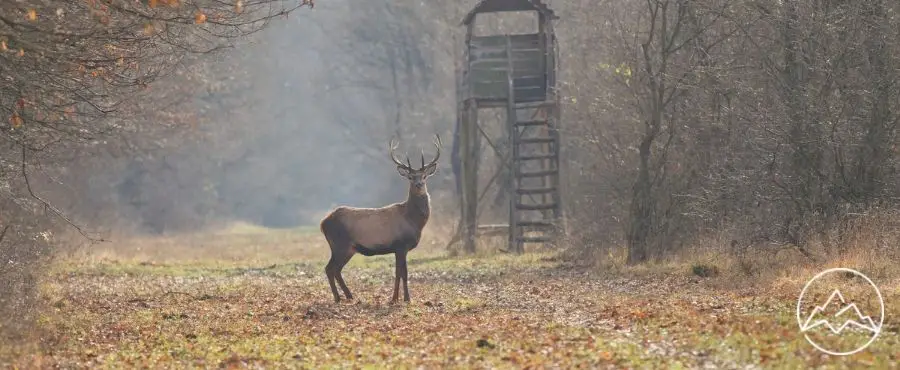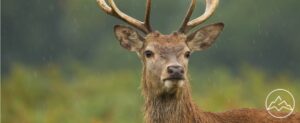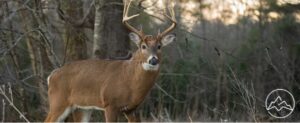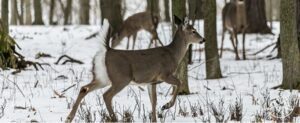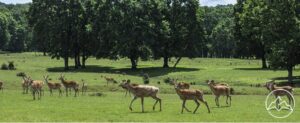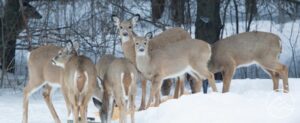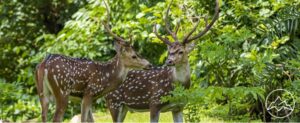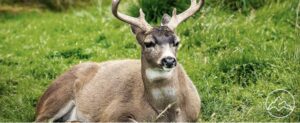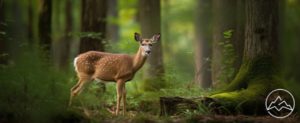Deer hunting is growing in popularity, but there are key tips to follow to make it easier. If you want to get the best out of each season, carefully consider your deer stand placement. Some hunters use a scattergun approach. While this can work out, it’s not the best way to do things. Instead, pick a good tree, and set up your tree stand. The correct placement can differentiate between a successful season and a fruitless one.
Top tips for deer stand placement
Here are a few top tips to enhance your placement. Whether you’re a keen archer or a rifle pro, you can use these tips. You should consider these every time you’re setting up your tree stand.
Wind
One of the most crucial, yet overlooked things to think about is wind direction. You should’ve stayed home if the wind carries your scent to the deer. Avoid setting up your tree stand upwind. It would be best if you hunted downwind. Spooking deer is a surefire way to ruin your hunt; you’ll spook the whole deer herd if you spook one.
Getting to the tree stand
You should map out easy access to your tree stand with a short route. In an ideal world, you won’t even cross the deer trail. Mature deer have sensitive noses; getting to the tree stand with minimal fuss and without disturbing the track is ideal for proper scent control. A short access route is just as crucial in the late season.
Deer stand height
Whether you’re rifle hunting or bow hunting, your tree stand should be between 15 and 25 feet off the ground. Any lower than 15 feet, and you may as well not use a tree stand, but you compromise your shot angle if you go higher than 25 feet. You’ll have a smaller, more challenging target from >25ft.
Best types of trees
The ideal tree for a deer stand will depend on the stand you use, but there are some general rules of thumb to follow. You don’t want to be in the open or cast silhouettes. The only crucial thing you need is good camouflage.
Climbing tree stands
A climbing tree stand is pretty standard and consists of two parts, the climber and the platform. They’re limited to pretty straight trees without large branches, but they’re easy to use. The ideal layout for a climbing tree stand is a tree clustered with other trees for a good cover. If you can accomplish this, you’ll have excellent hiding ability and camouflage, but you may need some climbing sticks to get to where you need to be before attaching your climber.
Hang-on tree stands
Hang-on stands can be hung on virtually any tree, including crooked trees, making them the most versatile. Using climbing sticks, you can climb through branches and get into some impressive setups that wouldn’t be possible with other types.Ladder stands
Ladder stands are comfortable but can be challenging to set up well. They’re pretty obstructive and challenging to camouflage. Ladder stands should be set up at least a month before deer season so that deer can get used to them before opening day. I would also suggest attaching boughs to the ladder stand as additional camouflage.2 man ladder stands
This is a ladder stand made for two people as the last option. You can set these up in larger trees with plenty of camouflage. It’s a great way to introduce a novice or a child to hunting whitetails.
When to hang a deer stand
You should put your treestand up at least a month before deer season, but you can do it as early as 6-8 weeks before. This is so you give deer a chance to acclimatize to the treestand. Proper camouflage helps with this. Your best chance of a big buck will be getting there early and staying late.
Check out our review of the Best Tree Stands For 2022
Tree stand location
Now we can get into the details of tree stand placement. These are the best places to set up a deer stand, offering a high success rate.
Travel corridors
The deer’s travel corridors will be the top spot to aim for, particularly between bedding and food areas. There’ll be distinctive trails that they use to go from A to B. It’s crucial to know which food source they rely on, whether food plots, oak trees, or agriculture fields. Acorns are also an excellent food source. If you’re a bowhunter, search for heavily used trails between the bedding areas and food source, then find a tree around 30 yards from the track.
If you’re more interested in a mature buck, look for trails with less use, running parallel to the main trail. Mature whitetails most often use these trails.
Pinch points
A natural bottleneck or funnel is a pinch point; a pinch point is gold if you hunt whitetails. But there are multiple ways for a bottleneck to happen. You could be looking at a small wooded area between open fields, a waterfall, or two large wooded areas. The key feature shared is that the deer can’t avoid crossing the area. Bottlenecks can be hard to find, but if you do find one ensure that you continue to follow the proper setup; getting the wind direction right is especially crucial even if you find an excellent bottleneck. You should also consider setting up trail cameras near pinch points to keep an eye on deer activity.Field edges
Food plots and field edges are excellent for deer stands – the edges of a field can be a nice spot in the early season, as the bucks haven’t left bachelor groups yet and will be entering the field more predictably. They’ll soon become more unpredictable when the bachelor groups disperse, around the time the bucks shed their velvet. A novice hunter may feel as though the bucks have just vanished. One of the best tree stand setups for bowhunters is a field edge in the rut while using decoys in the field. It’s an effective setup because the bucks will check out your lure; a grunt call is all you need to kick off some incredible action. When it turns cold, and most of the food is in the field, it can turn deadly. So be careful of this tactic late in the season.
Use a deer attractant
Deer attractants are a valuable tool to draw deer in. A mineral block or some food (such as corn) placed in front of a deer camera can boost your hunting technique. You can buy lures, bait, and attractants for under $50.
Take a look at our review of Best Deer Food Plots
Watering holes
Although deer get a lot of moisture from the plants they consume, they’ll still need to drink, especially in arid climates. If you’re hunting in a dryer climate, you should think about crafting a watering hole. It can become a place of congregation, the place they head to after leaving the bedding area. You can get excellent shot opportunities that you wouldn’t have had otherwise.
FAQs About Deer Stand Placement
What are some of the most important considerations when selecting a location for a deer stand?
How can I maximize my visibility while still remaining concealed in my deer stand?
Are there any special techniques that can be used to make sure that scent is not detected by deer?
Where is the best position to place my deer stand relative to food sources and water sources?
How far away from bedding areas should I place my deer stand for optimal results?
Wrapping up
It would be best to consider your deer placement strategy long before the hunting season. A well-thought-out plan will perform better than just winging it. Here are some key points to remember:- You should always hunt downwind
- Keep a fast access route to your stand
- Hunt between feeding areas and bedding areas
- Keep your treestand between 15 and 25 feet
- Use natural camouflage
- Track deer movement
- Put up your stand well before opening day
- Consider using food, bait, or a mineral lick to attract deer
- Choose a good hunting spot, or create one (for example, a watering hole)
By following the deer stand strategy above, you’ll be well on your way to a successful hunting season.
Want to learn more about deer hunting? Check out our 25 Deer Hunting Tips

